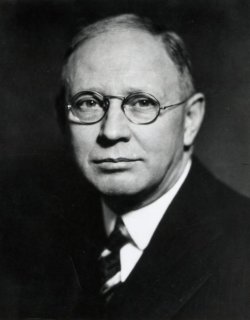
Motivational drives definition
According to drive-reduction theory, humans are motivated to satisfy physiological needs in order to maintain homeostasis.
Learning Objective
- Evaluate the advantages and disadvantages of how drive-reduction theory explains motivation
Key Points
- Drive-reduction theory, first proposed by Clark Hull in 1943, proposed that the purpose of biological drives is to correct disturbances of homeostasis.
- Primary drives are innate biological needs (e.g., thirst, hunger, and desire for sex), whereas secondary drives are associated with—and indirectly satisfy—primary drives (e.g., the desire for money, which helps pay for food and shelter).
- Drives are thought to underlie all behavior in that behaviors are only conditioned, or learned, if they satisfy a drive.
- Drive-reduction theory has been criticized for failing to explain how secondary reinforcers reduce drive or why individuals engage in "pleasure-seeking" behaviors.
Terms
- drive
Acts of motivation like thirst or hunger that have primarily biological purposes.
- homeostasis
The ability of a system or living organism to adjust its internal environment to maintain a stable equilibrium, such as the ability of warm-blooded animals to maintain a constant temperature.
Full Text
Motivation describes the wants or needs that direct behavior toward a goal. Motivations are commonly separated into two types: drives are acts of motivation like thirst or hunger that have primarily biological purposes, while motives are fueled primarily by social and psychological mechanisms.
An early theory of motivation proposed that the maintenance of homeostasis is particularly important in directing behavior. Homeostasis is the tendency to maintain a balance, or optimal level, within a biological system. In a body system, a control center (which is often part of the brain) receives input from receptors (which are often complexes of neurons). The control center directs effectors (which may be other neurons) to correct any imbalance in the body detected by the control center.
The purpose of biological drives is to correct disturbances of homeostasis. Unsatisfied drives are detected by neurons concentrated in the hypothalamus in the brain. These neurons then produce an integrated response to bring the drive back to its optimal level. For instance, when you are dehydrated, freezing cold, or exhausted, the appropriate biological responses are activated automatically (e.g., body fat reserves are mobilized, urine production is inhibited, you shiver, blood is shunted away from the body surface, etc.). While your body automatically responds to these survival drives, you also become motivated to correct these disturbances by eating, drinking water, resting, or actively seeking or generating warmth by moving. In essence, you are motivated to engage in whatever behavior is necessary to fulfill an unsatisfied drive. One way that the body elicits this behavioral motivation is by increasing physiological arousal.
Drive-reduction theory was first developed by Clark Hull in 1943. According to this theory, deviations from homeostasis create physiological needs. These needs result in psychological drive states that direct behavior to meet the need and, ultimately, bring the system back to homeostasis. When a physiological need is not satisfied, a negative state of tension is created; when the need is satisfied, the drive to satisfy that need is reduced and the organism returns to homeostasis. In this way, a drive can be thought of as an instinctual need that has the power to motivate behavior.

Father of Drive Reduction Theory
Clark Leonard Hull developed drive-reduction theory, one of the earliest theories of motivation.
For example, if it’s been a while since you ate, your blood sugar levels will drop below normal. Low blood sugar induces a physiological need and a corresponding drive state (i.e., hunger) that will direct you to seek out and consume food. Eating will eliminate the hunger, and, ultimately, your blood sugar levels will return to normal.
Drive-reduction theory also emphasizes the role that habits play in the type of behavioral response in which we engage. A habit is a pattern of behavior in which we regularly engage; once we have engaged in a behavior that successfully reduces a drive, we are more likely to engage in that behavior whenever faced with that drive in the future (Graham & Weiner, 1996).
Drive-reduction theory distinguishes between primary and secondary drives. Primary drives are innate biological needs (e.g., thirst, hunger, and desire for sex) that are usually necessary for survival. Secondary drives, on the other hand, are not usually necessary for survival and are often linked to social or identity factors (e.g., the desire for wealth). Secondary drives are associated with primary drives because the satisfaction of secondary drives indirectly satisfies primary drives. For example, the desire for wealth is not necessary for survival; however, wealth provides you with money that can be used to acquire food, shelter, and other basic needs, thereby indirectly satisfying these primary drives. Secondary drives become associated with primary drives through classical conditioning.
According to Hull, drive reduction is a major aspect of learning. Drives are thought to underlie all behavior in that behaviors are only conditioned, or learned, if the reinforcement satisfies a drive. Individuals faced with more than one need at the same time experience multiple drives, and research has shown that multiple drives can lead to more rapid learning than a single drive.
There are several issues that leave the validity of drive-reduction theory open for debate. For one, drive-reduction theory has trouble explaining why humans and other animals voluntarily increase tension by exploring their environments, even when they are not hungry or thirsty. There are also complications to drive-reduction theory caused by so-called "pleasure-seeking" behaviors, which seem to be contradictory to the theory's precepts. Why would an individual actively seek out more stimulation if it is already in a state of relaxation and fulfillment? Proponents of drive-reduction theory would argue that one is never in a state of complete fulfillment, and thus, there are always drives that need to be satisfied.









